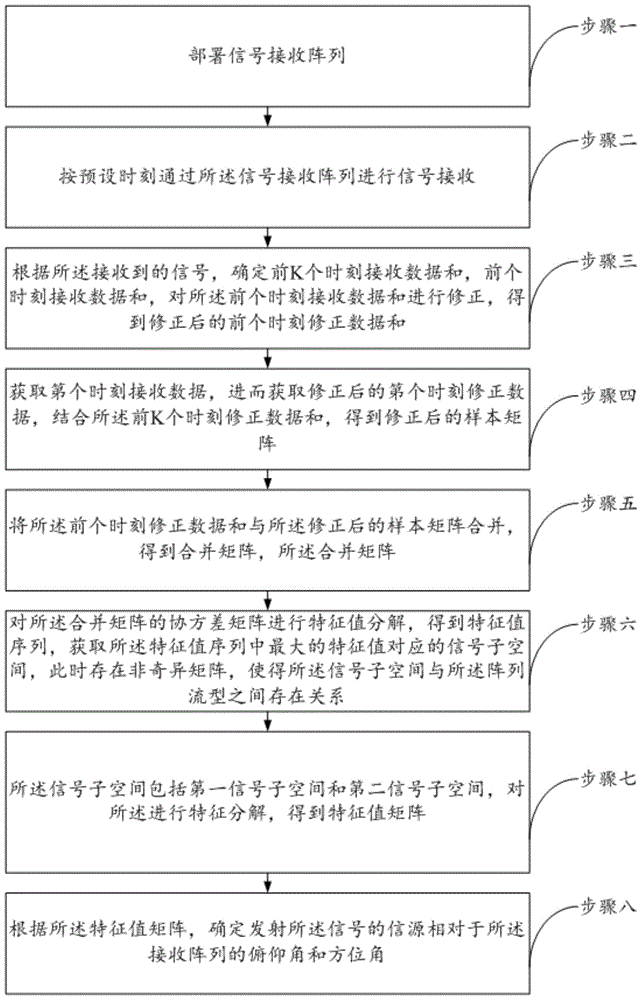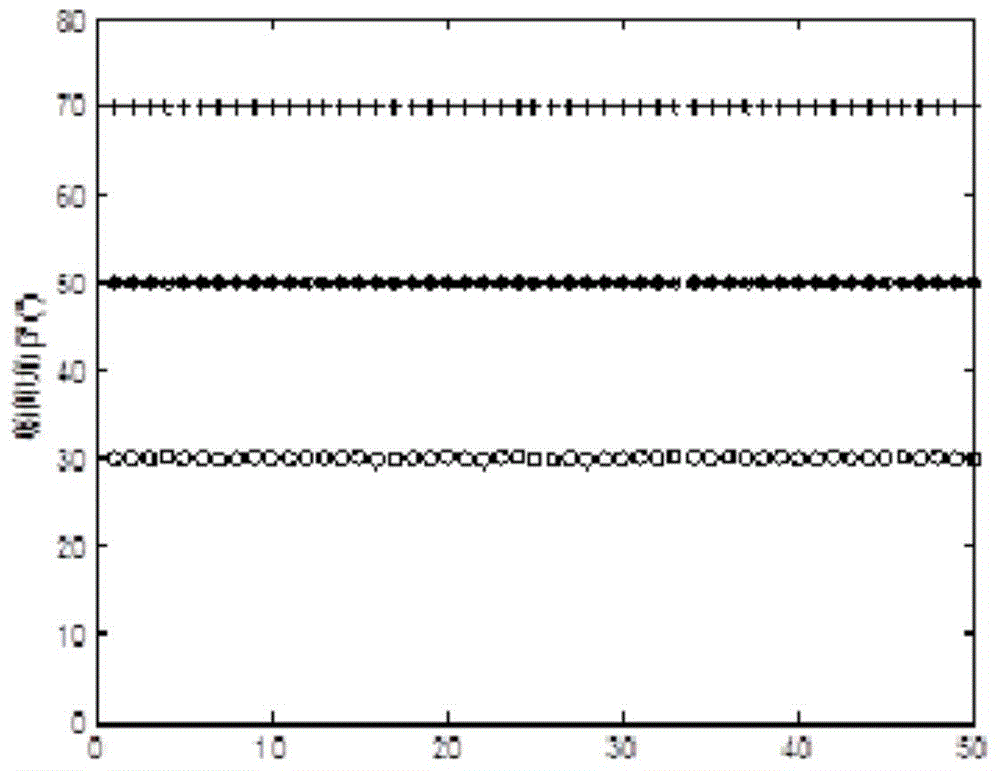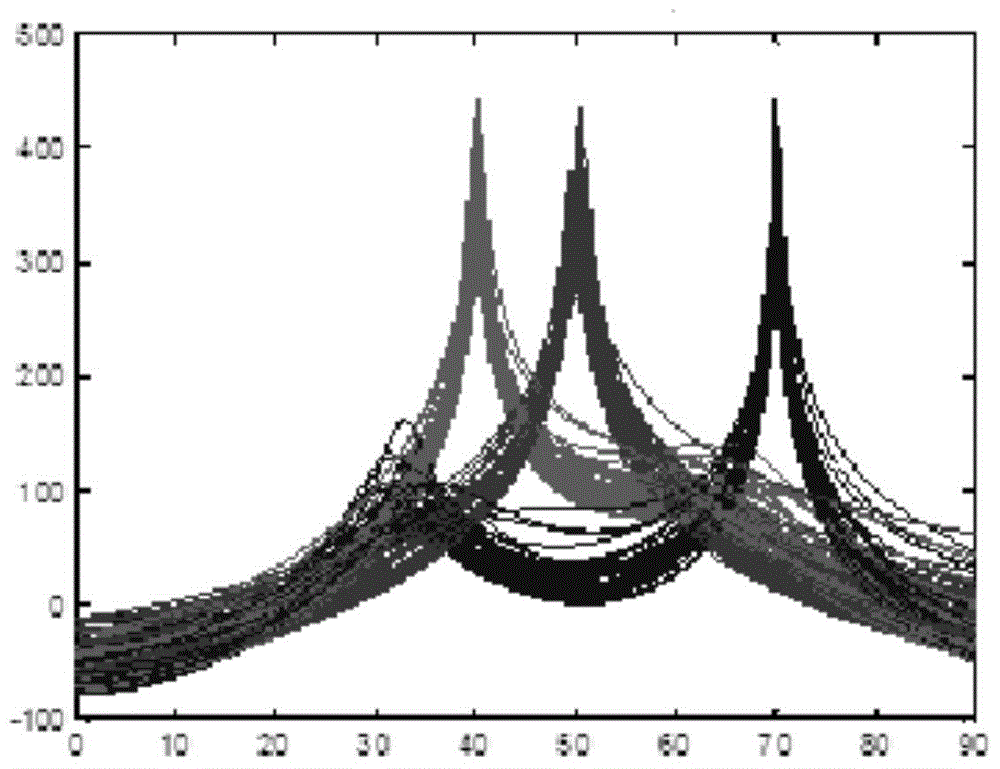Mobile sensor array AOA detection sum-difference algorithm
A technology of mobile sensors and arrays, applied in instruments, radio wave measurement systems, etc., can solve problems such as low estimation accuracy and inability to accurately estimate AOA
- Summary
- Abstract
- Description
- Claims
- Application Information
AI Technical Summary
Problems solved by technology
Method used
Image
Examples
Embodiment 1
[0049] The present invention provides a sum-difference algorithm for AOA detection of a mobile sensor array. The sum-difference algorithm for AOA detection of a mobile sensor array includes:
[0050] Step 1, deploy the signal receiving array.
[0051] Step 2, signal reception is performed through the signal receiving array at a preset time, and the received signal is x 1 、x 2 ,...,x k , where k are different receiving moments.
[0052] Step 3, according to the received signal, determine the received data and x at the first K moments ΣK , the first (n-1) K moments receive data and x Σ(n-1)K , correct the data received at the first (n-1) K times and correct them, and obtain the corrected data and x at the first (n-1) K times after correction Σ(n-1)K '.
[0053] Step 4: Obtain the received data at the nKth moment, and then obtain the corrected correction data at the nKth moment, and combine the correction data at the first K moments with x ΣK ’ to get the corrected sample ...
PUM
 Login to View More
Login to View More Abstract
Description
Claims
Application Information
 Login to View More
Login to View More - R&D
- Intellectual Property
- Life Sciences
- Materials
- Tech Scout
- Unparalleled Data Quality
- Higher Quality Content
- 60% Fewer Hallucinations
Browse by: Latest US Patents, China's latest patents, Technical Efficacy Thesaurus, Application Domain, Technology Topic, Popular Technical Reports.
© 2025 PatSnap. All rights reserved.Legal|Privacy policy|Modern Slavery Act Transparency Statement|Sitemap|About US| Contact US: help@patsnap.com



